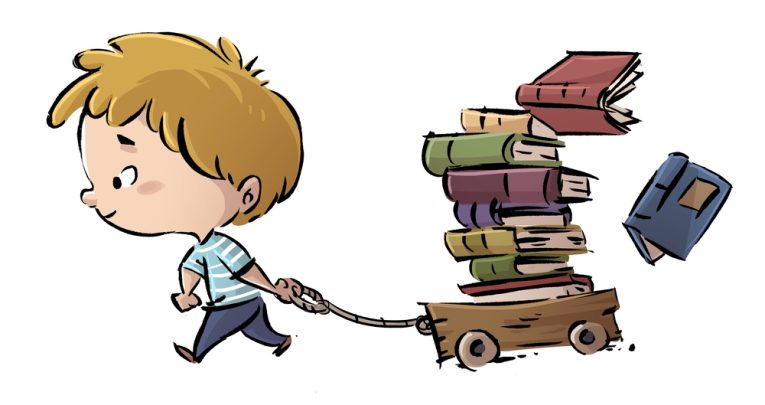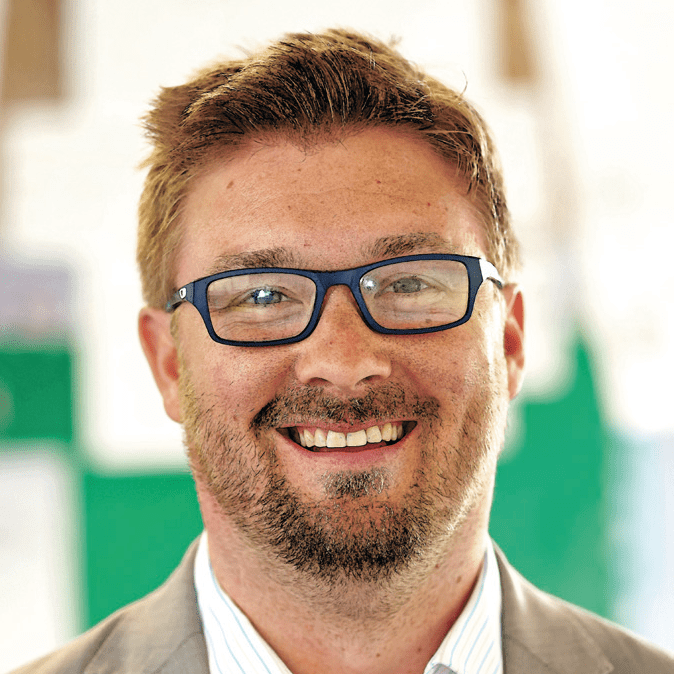Why Choose Between Teacher-Directed Or Child-Initiated Learning When You Can Have Both?

Children in early years need play-based learning, not formal learning – but is that true? Drop the either / or thinking and give your youngsters the best of both worlds, urges Jeremy Hannay…

Who’s cooler – Superman or Batman? Who would win in a fight – Wolverine or Cyclops?
Growing up, my eldest brother and I loved to read comic books, and these were the sort of questions I have fond memories of us arguing about, each taking an opposing stance. That was until our younger brother started to read comics and joined in the conversation. At that point something changed for me. I went from truly believing that there were only two possible positions, to understanding that, firstly, perhaps there was another option we hadn’t considered, and secondly, it might be possible that we were all correct. The world is full of these false dichotomies, where two opposing ideas are presented as being directly opposed to one another – or the only two options – when in reality they aren᾿t at all This paradigm has been proven to me over and over again as a class teacher, school leader and doctoral researcher; solutions are rarely as simple as one idea or the other, and very often the truth lies somewhere in between. And education has its fair share of false dichotomies. I’ve met many early years consultants who stare seethingly at me when I suggest that we need to provide more formal opportunities for reading, writing and mathematics in our nursery and reception. “That is not the way they learn”; “They need to choose their own learning experiences”; “Research says…more play, more self-initiation, more child-led…; etc etc… Suggesting that children in reception should sit at desks to write, or on the carpet for whole-class instruction, is met with frustration and cynicism. These people believe that teacher-directed learning and child-initiated learning are mutually exclusive.
Here, our teachers are primarily supportive rather than directive, engaging individuals or groups in conversations about what they are doing or plan to do. They introduce themes, often based on the children’s interests, and discuss key concepts such as numbers, shapes, colours and vocabulary that connect to greater learning.
Meeting in the middle
This congruence between thoughtful teacher-direction and child-initiation is seamless. And, most importantly, our children are happier than they have ever been. No love of learning has been lost – if anything, it is on a steadfast rise. Where we used to put limits on learning, they now have the freedom to express themselves and make meaning of the world using language and conventions. For years we’ve been told it’s either teacher-directed or child-initiated learning – that you have to choose one or the other, that they’re mutually exclusive. But we must have both. When woven together by talented and passionate teachers, they operate in beautiful harmony. Our children often enter the school with limited social, emotional and academic capital, but they leave our early years setting from a position of joy, confidence and creativity.
They have a bank of nursery rhymes to draw on, a variety of stories and language features with which they speak and write, phonics and language skills to support reading and meaning-making, and the capacity to collaborate with each other and adults in magical ways, happily moving their learning forward as independent, courageous and talented young people.
Formal agreement
Four reasons to use Talk for Writing in the early years…
1. It provides secure start Every early years child becomes a writer when they learn a story orally from beginning to end and intelligently investigate its components to form initial ideas about grammar, punctuation, and sentence level work.
2. Innovation is encouraged After learning a story orally, children invent their own versions. The way in which they learn to copy, transform and combine ideas forms the building blocks for all creativity.
3. It᾿s great fun Pupils absolutely love learning and retelling a story using actions and different intonations. Reenacting the giant from Jack and the Beanstalk or huffing and puffing along with the Three Little Pigs is engaging and effective for everyone.
4. Research backs it up This approach is rooted in recent and relevant research, considering both how we learn and how early years children begin to write (Chambers, Cheung & Slavin, 2016).
Jeremy Hannay is deputy headteacher at Three Bridges Primary in Southall; for more information, visit www.threebridgesprimary.co.uk or follow @ThreeBridgesSch
But at Three Bridges, we don᾿t think it᾿s so clear cut, and believe that a balanced approach involving both priorities is what’s best for our youngest learners. Not only is our way or working supported by recent large-scale research, it provides our disadvantaged pupils (baseline: 93% below, 60% significantly below) with the social, emotional and academic capital they need to flourish as readers, writers and problem solvers. It’s the structure of learning that provides them with the freedom to learn.
Daily dose
A typical day for us involves a morning of more-structured English and maths programmes, characterised by whole-class and mastery-group instruction, followed by a free-flowing afternoon with opportunities for make-believe, experimentation and unstructured group play. Our English programme includes a teacher-led session using the Sounds-Write approach for quality-first phonics, and an active and integrated Talk for Writing story time. We vary the activities that follow. There is a whole-group writing session, and break-out mastery groups for learners who need more-focused time with an adult. The idea is to bridge the gap between our high- and low-performing learners that is traditionally seen upon entry to Year 1. Pupils start writing on individual lines, before moving on to four-line tramlines as the year progresses. This transition is supported with our custom-made whiteboards and books, and is guided by our teachers’ professional judgement. Pupils are encouraged to be independent and select their own writing tools, in addition to regulating their partner-talk using speaking frames, which foster talk in complete sentences. There is reading of high-quality and creative texts with a focus on reading for meaning, in addition to pupils engaging with books they can read independently. In line with the rest of the school, our children learn to make inferences, predictions, and connections. They create mental images and identify text features. They learn letter-formation, handwriting control and the joy of being able to express themselves using the written word, all while building their vocabularies and creative voice through oral and written approaches deeply embedded within the Talk for Writing pedagogy. Our youngest people go on to leave our school among the best in our local authority.
Seeing the joy on their faces when they have taken an idea in their heads and purposefully written it down for someone else to read is tangible evidence of ‘literacy as freedom’.
Question time
In maths, we use adult-led instruction via the Singaporean method. It’s an approach we use throughout the school and one that complements our beliefs about quality-first pedagogy across all subjects. Children are introduced to a problem while sitting on the carpet, and through concrete materials and pictorial representations they are skilfully questioned in order to determine multiple solutions. They talk to each other and have many opportunities for oral formative feedback. Then pupils work on practical, hands-on activities at tables, slowly building towards using more abstract concepts such as numbers and symbols, as preparation for lifelong learning. They discuss cardinality and ordinality, rational and irrational counting, number bonds to 10 and the use of 10-frames for numbers to 20. It is crucial that all of the children leave with strength in making connections, finding patterns, a well-rooted number sense and the ability to communicate and articulate their thoughts. Our afternoons, however, closely resembles other foundation programmes. We have a strong emphasis on child-initiated activity, play, make-believe, art, music, and movement. Our children typically play at self-chosen activity stations or tables, both indoors and outdoors. This offers them a range of materials to stimulate language and cognitive development, with open-ended and themed activities such as finger-painting, sand and water tables, a dress-up area, a puppet theatre, blocks, cars and trucks.
Here, our teachers are primarily supportive rather than directive, engaging individuals or groups in conversations about what they are doing or plan to do. They introduce themes, often based on the children’s interests, and discuss key concepts such as numbers, shapes, colours and vocabulary that connect to greater learning.
Meeting in the middle
This congruence between thoughtful teacher-direction and child-initiation is seamless. And, most importantly, our children are happier than they have ever been. No love of learning has been lost – if anything, it is on a steadfast rise. Where we used to put limits on learning, they now have the freedom to express themselves and make meaning of the world using language and conventions. For years we’ve been told it’s either teacher-directed or child-initiated learning – that you have to choose one or the other, that they’re mutually exclusive. But we must have both. When woven together by talented and passionate teachers, they operate in beautiful harmony. Our children often enter the school with limited social, emotional and academic capital, but they leave our early years setting from a position of joy, confidence and creativity.
They have a bank of nursery rhymes to draw on, a variety of stories and language features with which they speak and write, phonics and language skills to support reading and meaning-making, and the capacity to collaborate with each other and adults in magical ways, happily moving their learning forward as independent, courageous and talented young people.
Formal agreement
Four reasons to use Talk for Writing in the early years…
1. It provides secure start Every early years child becomes a writer when they learn a story orally from beginning to end and intelligently investigate its components to form initial ideas about grammar, punctuation, and sentence level work.
2. Innovation is encouraged After learning a story orally, children invent their own versions. The way in which they learn to copy, transform and combine ideas forms the building blocks for all creativity.
3. It᾿s great fun Pupils absolutely love learning and retelling a story using actions and different intonations. Reenacting the giant from Jack and the Beanstalk or huffing and puffing along with the Three Little Pigs is engaging and effective for everyone.
4. Research backs it up This approach is rooted in recent and relevant research, considering both how we learn and how early years children begin to write (Chambers, Cheung & Slavin, 2016).
Jeremy Hannay is deputy headteacher at Three Bridges Primary in Southall; for more information, visit www.threebridgesprimary.co.uk or follow @ThreeBridgesSch











